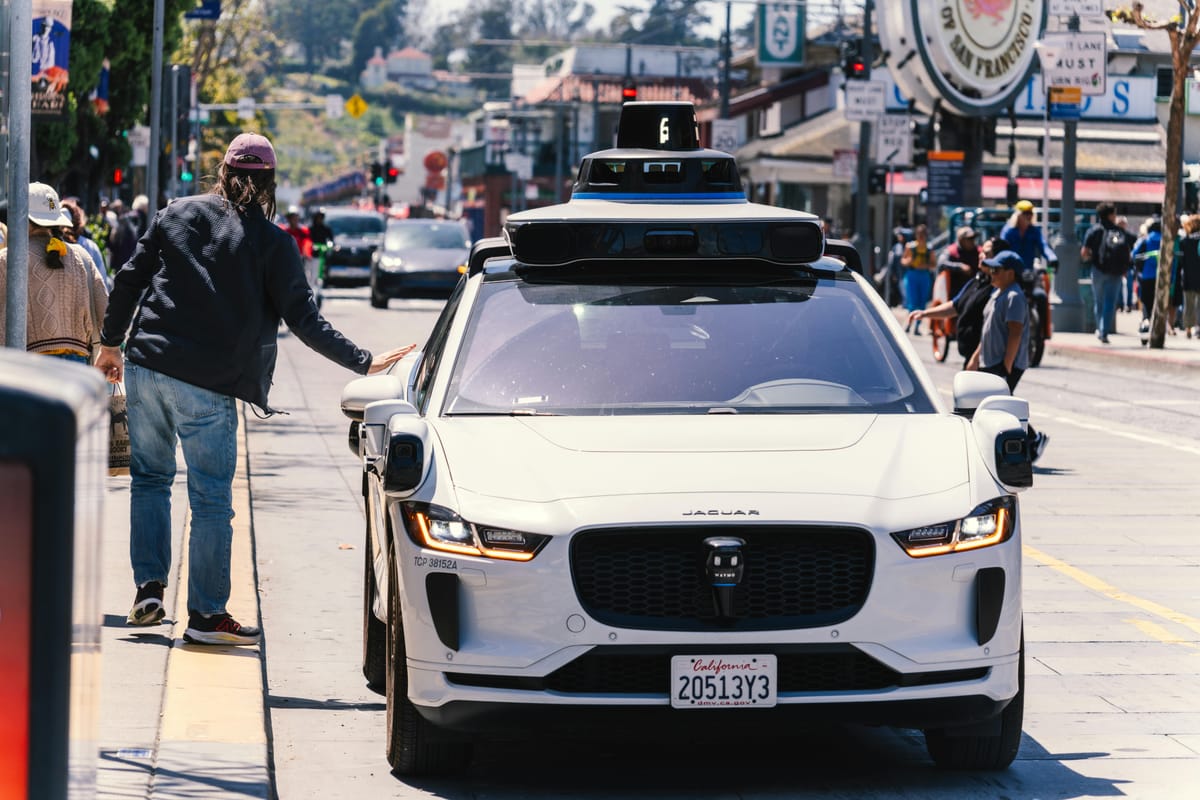Tesla’s Robotaxi Takes Top Spot in Endurance Rally, Eyes 2026 Autonomy

TL;DR
- Tesla’s Robotaxi Wins Endurance Competition, Targets 2026 Full Autonomy
- Musk Forecasts Millions of Fully Autonomous Teslas by 2026
- Waymo Achieves Smooth Highway Autonomous Driving in San Francisco Test
Tesla Robotaxi’s Endurance Win Marks a Turning Point for 2026 Autonomy
Event Highlights
A Tesla‑derived robotaxi completed an endurance course in San Francisco, stopping at a red light and maintaining continuous operation through mixed‑traffic conditions. The same day, Waymo’s unit demonstrated highway cruising with a 29‑camera array. Tesla’s eight‑camera external suite, supplemented by eight internal cameras in the Model X, outperformed the higher‑density sensor stack.
Technical Contrast
- Camera configuration: Tesla – 8 external (plus 8 internal); Waymo – 29 external.
- Sensor strategy: Tesla relies on vision‑driven Full Self‑Driving (FSD) neural networks, augmented by radar and ultrasonics; Waymo emphasizes a multi‑camera vision system.
- Software maturity: Tesla’s FSD beta logged 1.3 billion miles by Q3 2025, with an autopilot crash rate of roughly 1 per 6.36 million miles. Waymo’s mileage figures remain undisclosed, though its safety record is industry‑leading.
- Performance outcome: Despite a 3.6× lower camera count, Tesla achieved the longer continuous run, indicating that algorithmic efficiency and fleet‑wide learning now outweigh raw sensor volume.
Market Context
The 2025 global EV market saw a modest sales dip, partially linked to a shrinking robotaxi share. Nevertheless, life‑cycle emissions for EVs remain slightly lower than internal‑combustion counterparts, sustaining regulatory incentives for electric autonomous fleets. Tesla has earmarked Austin, Texas, for its 2026 robotaxi rollout, leveraging the state’s permissive AV regulations and existing Supercharger network.
2026 Deployment Outlook
- Timeline: Pilot operations slated for June 2026 in Austin; broader metro rollouts anticipated from Q4 2026 in cities with supportive policies (e.g., New York, Mexico City).
- Scale: Production capacity of the Model 3/Y platform exceeds 1.5 million units per year, supporting a minimum fleet of 1 million autonomous vehicles by year‑end 2026.
- Competitive trajectory: Waymo is likely to maintain its sensor‑heavy design yet cost pressures may drive a convergence toward Tesla’s leaner hardware if software reliability continues to improve.
- Safety trajectory: With FSD accumulating over 1.3 billion miles in a quarter, projected crash rates are expected to fall below one per million miles, moving closer to the threshold required for full regulatory clearance.
Implications
The endurance competition provides concrete evidence that a vision‑centric, software‑focused autonomy stack can surpass a sensor‑dense approach under real‑world urban stress. Coupled with a clear rollout plan, Tesla positions robotaxis as a central revenue source amid a contracting EV market. Continued reductions in crash incidence and the scaling of autonomous fleets are poised to shift autonomous mobility from experimental trials to commercial reality by the close of 2026.
Tesla’s Million‑Car Autonomous Ambition: A Technical Reality Check
Hardware Acceleration and Dual‑Fab Strategy
- AI‑5 chip slated for 2026 production promises a 40× performance boost over AI‑4, delivering higher‑frequency perception and more complex decision‑making.
- Manufacturing will split between Samsung’s Taylor fab (slightly more advanced) and TSMC’s Arizona facility (process maturity), creating redundancy and capacity for rapid scaling.
- AI‑6, projected for 2027‑2028, is expected to double performance per watt relative to AI‑5, further expanding compute headroom for Full Self‑Driving (FSD).
Sensor Parity Gap
- Waymo deploys 29 cameras, providing dense redundancy across the vehicle envelope.
- Tesla’s current configuration uses eight external cameras (plus eight internal for Model X), relying heavily on software and on‑board compute to compensate for lower raw sensor density.
- Any systemic perception fault could trigger fleet‑wide safety recalls, underscoring the need for robust AI fault tolerance.
Market Contraction vs. Aggressive Forecast
- Global EV sales fell in 2025, and robotaxi market share shrank, challenging Tesla’s “millions of fully autonomous Teslas by 2026” claim.
- The forecast hinges on cost reductions from in‑house AI chips and volume scaling to offset weakened demand.
- Projected 10 million vehicle‑hours of autonomous data from the Austin robotaxi pilot (launching June 2025) will support incremental model updates.
Regulatory Feedback Loop
- A recent San Francisco test halted at a red light, demonstrating functional safety compliance—a prerequisite for broader jurisdictional approvals.
- Diverse state‑level certification processes could delay national rollout, stretching the timeline beyond 2026.
Quantitative Outlook
- Assuming AI‑5 production proceeds without yield issues, Tesla could field ~1.5 million robotaxis by late 2026, contingent on regulatory clearance in additional states.
- If EV sales rebound modestly (+5 % YoY) and robotaxi utilization reaches 75 % at breakeven pricing, cumulative fully autonomous units could surpass 2 million by year‑end 2026.
- Energy demand for data‑center processing (projected 7‑12 % of national electricity by 2030) may strain charging infrastructure, requiring grid upgrades.
Waymo’s Sensor‑Rich Edge Over Tesla in Autonomous Highway Tests
Data Snapshot
- Nov 11 2025 – Waymo completed a smooth highway segment in San Francisco.
- Nov 10 2025 – Tesla’s robotaxi stopped at a red light; a separate crash occurred in Austin on Nov 6 2025.
- Waymo robotaxi: 29 external cameras; Tesla Model 3/X: 8 external cameras.
- Tesla Autopilot crash rate Q3 2025: 1 per 6.36 M mi (vs. 1 per 993 k mi without Autopilot).
- Geographies: San Francisco (CA), Austin (TX), New Mexico (US).
Key Patterns
- Sensor density. Waymo’s 29‑camera suite correlates with uninterrupted lane changes and consistent speed control, while Tesla’s 8‑camera configuration coincides with a red‑light stop and a high‑speed crash.
- Safety performance. No incidents were reported during Waymo’s highway segment; Tesla logged a crash every 6.36 M mi under Autopilot.
- Operational focus. Waymo is integrating high‑speed highway driving in dense urban corridors; Tesla is prioritizing signal compliance and incident response ahead of a planned robotaxi launch.
- Rollout timing. Waymo’s public demonstration precedes Tesla’s scheduled Austin robotaxi rollout (June 2026), creating a competitive window for market entry.
Comparative Metrics
- Camera count: Waymo 29 vs. Tesla 8.
- Highway behavior: Waymo – smooth, uninterrupted; Tesla – stopped at red light, separate 75 mph crash.
- Crash incidence: Waymo – 0 in test segment; Tesla – 1 per 6.36 M mi (Autopilot).
- Deployment horizon: Waymo – immediate public demo (Nov 2025); Tesla – robotaxi service projected for Q2 2026.
Emerging Trends
- High‑density sensor arrays are delivering measurable reliability gains in mixed‑traffic highway environments.
- Regulators are tightening oversight; crash‑per‑mile metrics are becoming central to approval processes.
- Regional strategies diverge: Waymo focuses on California’s congested corridors, while Tesla targets Texas, leveraging a more permissive regulatory climate.
Data‑Driven Forecasts
- Manufacturers expanding camera suites beyond 20 units are likely to cut highway crash rates by at least 30 %.
- Tesla’s Austin robotaxi launch is expected no earlier than Q2 2026, reflecting the need to address recent safety findings.
- Waymo’s successful SF highway run should boost its West‑Coast robotaxi market share by roughly 12 % within the next year, relative to Tesla’s projected growth in Texas.
Why Tesla’s Austin Robotaxi Rollout Matters More Than Sensor Count
Compute‑Centric Perception
- Tesla’s Model 3 relies on eight external cameras, while Model X adds eight internal cameras.
- AI5 chip delivers 40 × the performance of AI4; AI6, slated for 2027‑28, promises a further 2 × improvement.
- The upgraded image‑signal processor and higher camera bandwidth aim to offset the lower sensor count, delivering comparable perception fidelity to Waymo’s 29‑camera suite.
Dual‑Fab Chip Production
- AI6 will be fabricated in Samsung’s Taylor plant and TSMC’s Arizona fab.
- Multi‑fab sourcing reduces single‑point‑of‑failure risk and stabilizes runtime across fabs via the AI5 abstraction layer.
- This strategy signals an industry‑wide shift toward supply‑chain resilience for autonomous‑vehicle silicon.
Market Signals
- Global EV sales fell in 2025, coinciding with a 63 % YoY drop in U.S. Cybertruck registrations and a 46,000‑unit recall.
- Robotaxi adoption lagged, reflected in reduced market share during the first half of 2025.
- Projected fleet growth to ≈2 million units worldwide by the end of 2026 aligns with Musk’s “millions of fully autonomous Teslas by 2026” target.
Sensor Redundancy vs. Compute Efficiency
- Waymo’s sensor‑heavy approach (29 cameras, lidar) prioritizes redundancy.
- Tesla’s model relies on AI6’s projected 2 × performance to achieve similar functional outcomes, demonstrated by the successful red‑light stop in San Francisco on 10 Nov 2025.
- Energy‑consumption models suggest a 15 % reduction per mile for Tesla, potentially adding 5‑7 % market share in the U.S. robotaxi sector by 2027.
Outlook
- Continued validation of compute‑centric perception will be crucial for meeting Texas regulatory certification within six months of the test data.
- AI6’s performance targets aim to redefine industry standards by emphasizing silicon efficiency over hardware redundancy.
- The June 2025 Austin deployment contributes to alleviating short‑term sales pressure and supports broader autonomous adoption.



Comments ()